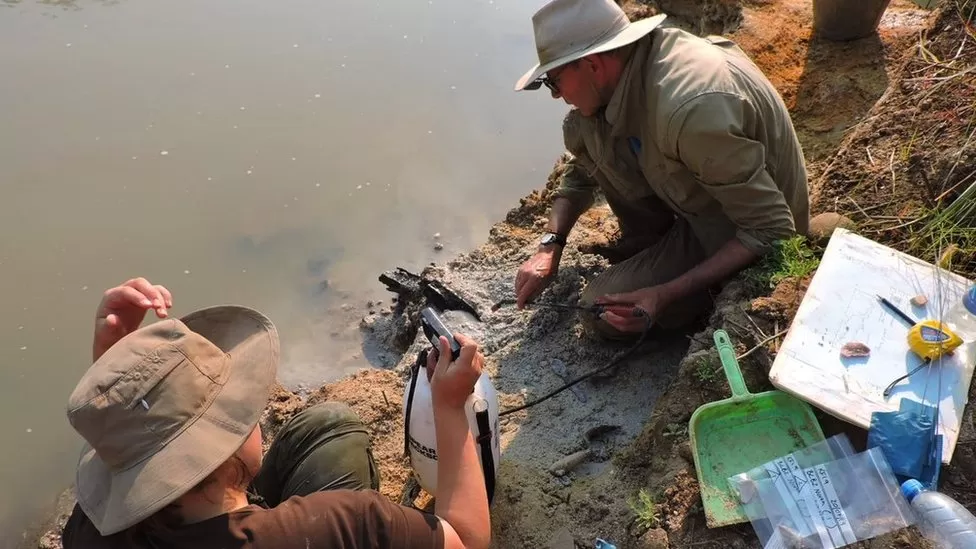Archaeologists have learned new things about how ancient humans lived after finding old wooden logs near a river in Zambia.
The research, which is in a scientific journal called Nature, shows that ancient humans built possible homes.
“This discovery has made me reconsider my understanding of our ancient predecessors,” said Professor Larry Barham, an archaeologist.
The scientist from the University of Liverpool is in charge of the Deep Roots of Humanity research project. This project involves digging up and studying old pieces of wood.
The finding may change the idea that people who lived long ago had basic, wandering lifestyles.
“They created a big new thing out of wood,” said Prof Barham.
They used their smarts, creativity and abilities to make something they hadn’t seen before, something that had never been made before
The scientists found really old wooden tools like sticks used for digging. However, what made them most enthusiastic were two pieces of wood discovered at a 90-degree angle to each other.
“One piece of wood is on top of the other, and both pieces of wood have cut-out sections,” explained Prof Geoff Duller, an archaeologist from the University of Aberystwyth.
You can easily see that those cuts were made by stones.
“It helps the two logs to come together and form solid objects. ”
Creating
More study showed that the logs were approximately 476,000 years old.
A person named Perrice Nkombwe, who is part of a team at the Livingstone Museum in Zambia, was very surprised to learn that woodworking has been a long-standing tradition.
“I suddenly realized that we had found something very special. ”
Until now, we only had proof that humans used wood to make fire and create tools like sticks for digging and spears.
Luminescence dating is a method used to figure out the age of objects by measuring the light they give off when stimulated.
One of the first wooden objects found was a spear that is 400,000 years old. It was discovered in the sand in a place called Clacton-on-Sea in Essex in 1911.
If we don’t keep wood in certain conditions, it will just decay and disappear.
But in the winding edges of the river above the Kalambo Falls, near the border of Zambia and Tanzania, it was full of water and preserved for thousands of years.
The team found out how old the layers of earth were by using luminescence dating.
Small pieces of rock collect natural radioactivity from the surroundings as time goes on. This is similar to how batteries are charged, according to Professor Duller.
And the grains can release and measure radioactivity by heating them up and analyzing the light they emit.
Scientists made models to demonstrate how logs that are positioned on top of each other could have been utilized.
The logs are different sizes, with the smaller one being about 1. 5 meters (5 feet) long. This indicates that the person who connected them was constructing something big and strong.
The team believes that it was probably not a hut or a permanent home, but possibly used as a part of a platform for a shelter.
Professor Duller suggested that it could be a place to sit by the river and go fishing.
“But it’s difficult to determine what kind of complete arrangement it could have been. ”
The practice of working with wood
Prof Duller said that there is a possibility that there were humans called Homo sapiens during that time, but we just haven’t found their fossils yet.
But there might be a different type of human-like beings called Homo erectus or Homo naledi. During that time in southern Africa, there were multiple types of primates similar to humans.
The wooden objects were brought to the UK to be studied and kept safe. They are being stored in containers that recreate the conditions that kept them well-preserved for the past 500,000 years. They will come back to Zambia soon to be shown.
Ms Nkombwe said that with this new discovery, we are hoping to add more items to our collection. We also plan to use these findings to better understand and explain the woodworking tradition in Zambia.
She said that if we keep working at the Kalambo Falls site, we can learn more about how people in the past made things out of wood, how skilled they were, and how they lived in their surroundings.

